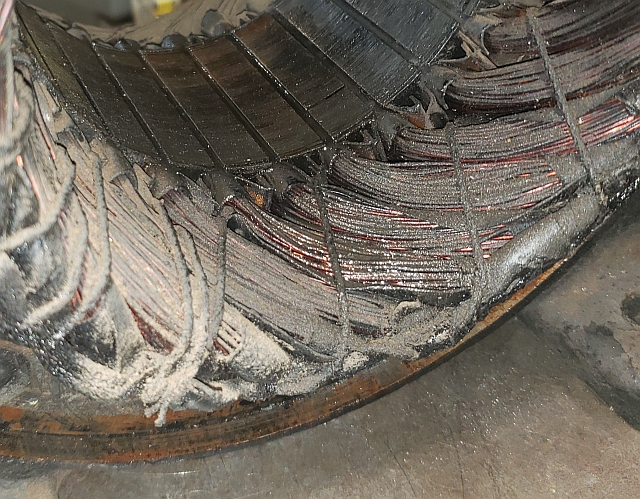metalmagpie
Titanium
- Joined
- May 22, 2006
- Location
- Seattle

The shiny windings at the bottom are covered in oil.
This is from a pre-1930 GE 1hp motor. I tore it down today and found that the bottom of the windings are pretty much saturated in oil. This is a plain bearing motor with oil baths/slinger rings at each end. The motor did run before I took it apart - I just wanted to clean it out and make sure there aren't any mouse nests or something.
I don't know if I should even worry about the oil on the windings. It isn't just the wires - the little steel sections of the winding core ooze oil when pressed from the side with a screwdriver.
And if I do need to get the oil out, I don't know the best way. I suppose left to my own devices I'd buy a couple cans of CRC Lectra Clean, put the stator in a plastic tub, and start spraying and wiping.
Ideas? Opinions?
metalmagpie

